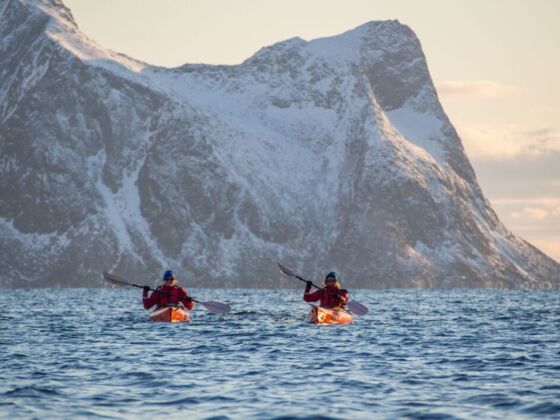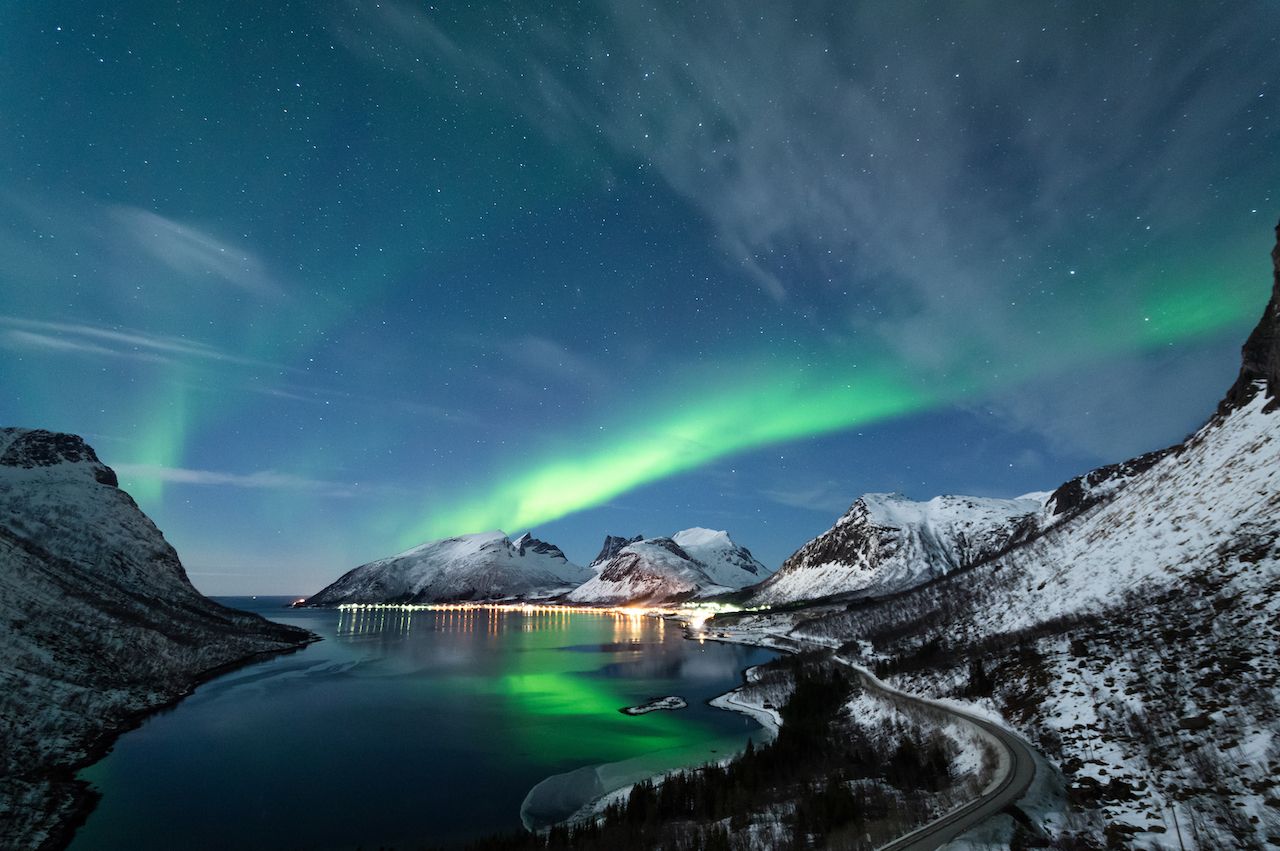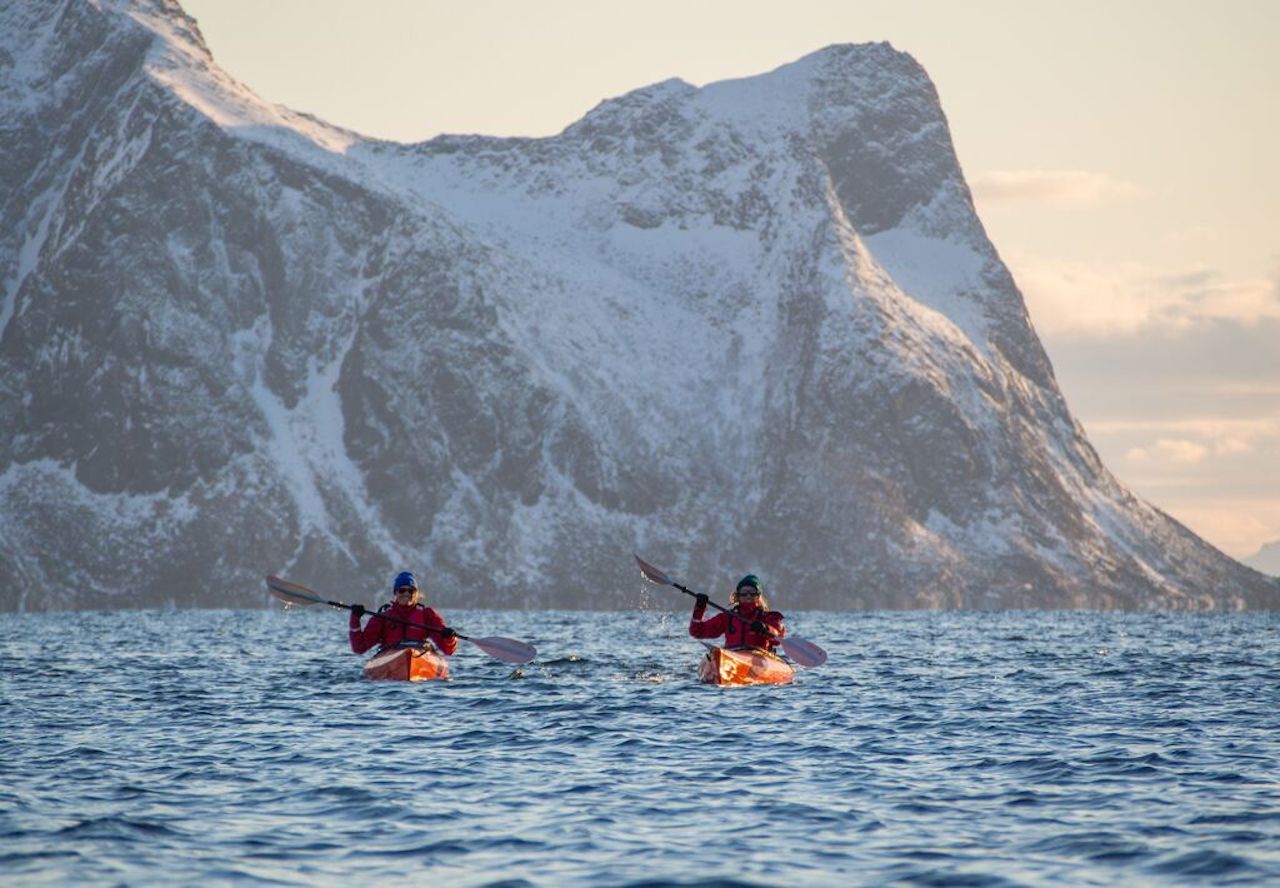Far above the Arctic circle lies a seldom-visited region of Norway: the island of Senja. Its fjords are so deeply carved from millennia of Atlantic erosion and its interior so incised by receding glaciers that it looks more like stitched together fingers of land than a single island. But that craggy, ice-etched landscape holds impossibly angled peaks, copious lakes, inlets, bays, and stunning, otherworldly views. It packs so much into its 612 square miles that it is often called “Norway in miniature.”
One thing Senja has not so much of is people. As yet unknown to most travelers who seek out the neighboring Lofoten Islands due south, Senja offers so much solitude that you’ll wonder how you arrived there with so little fuss. And whether you go in winter to chase the northern lights or in summer to savor endless sunshine in a majestic landscape, you’ll find an array of ways to take in the vistas and locals ready to help you with that endeavor. Norway has myriad outdoor places to savor its ethos of free air living, and Senja is one of the most remarkable among them.






